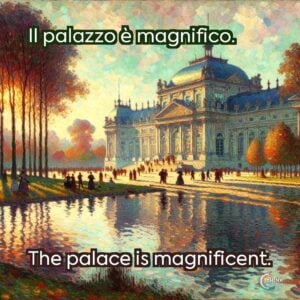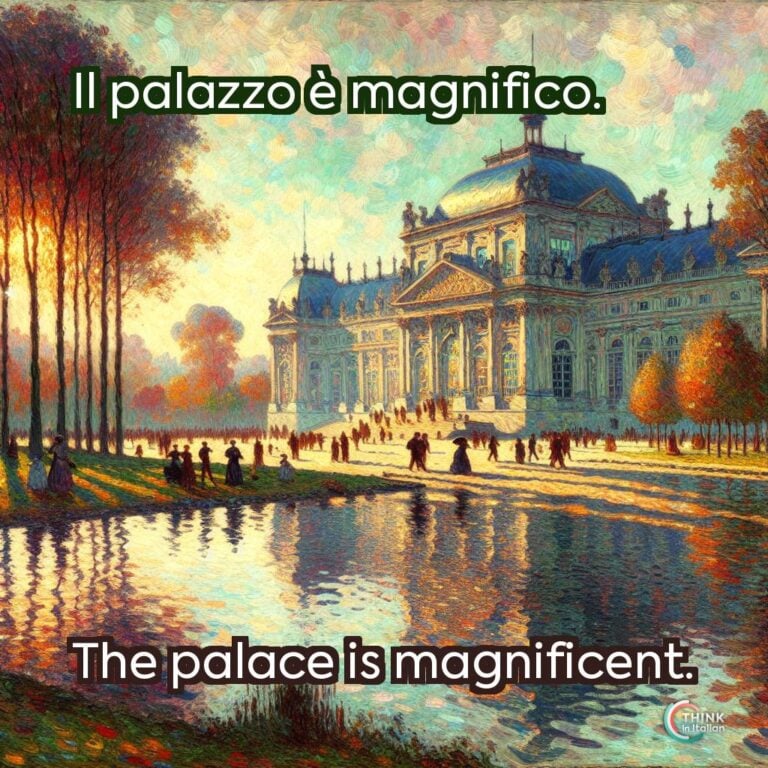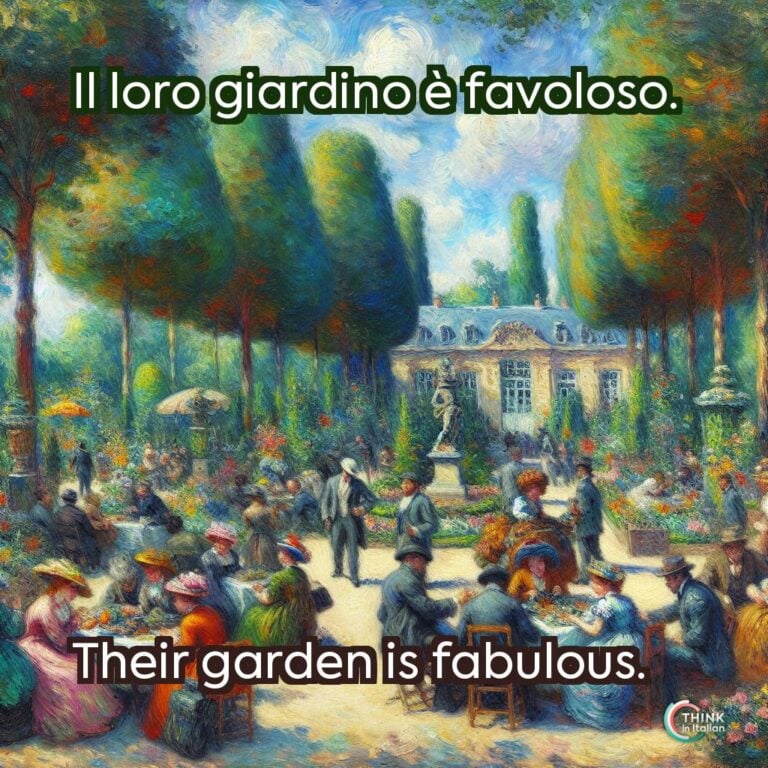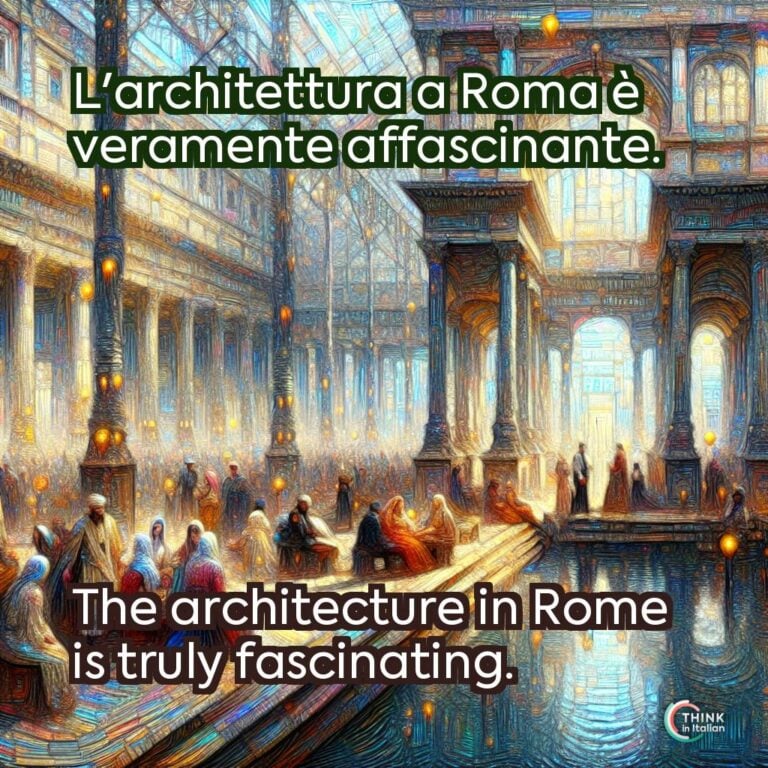Beautiful in Italian
In Italy, beauty is not just a concept, it’s a way of life. Italians have a deep appreciation for beauty in all its forms, from art and architecture to fashion, food, and nature, and this cultural importance is reflected in the language itself.
Beauty in Italian is expressed through words that vary in intensity and context, which makes the word for “beautiful” a very common and versatile Italian adjective.
Let me guide you through the five most common ways to say “beautiful” in Italian, but, before we start, remember that all adjectives in Italian must agree in gender and number with the noun it modifies.
Also remember that the default gender and number of nouns and adjectives is masculine singular. This means that I will provide you with the default form of each of these adjectives, but I will also show you all their grammatical variations.
How Do You Say Beautiful in Italian?
Bello
The most common word for “beautiful” in Italian is bello.
| Masculine | Feminine | |
|---|---|---|
| Singular | Bello | Bella |
| Plural | Belli | Belle |
This word is extremely versatile and can be used to describe people, places, objects, or even experiences. Whether you’re admiring a beautiful person or complimenting a picturesque town, bello is your go-to adjective.
Questa città è davvero bella!
This city is reallly beautiful!
Stupendo
Stupendo (masculine) is a stronger adjective that is used to describe something stunning that leaves you speechless.
| Masculine | Feminine | |
|---|---|---|
| Singular | Stupendo | Stupenda |
| Plural | Stupendi | Stupende |
This word emphasizes that the beauty is remarkable and extraordinary, often used for breathtaking scenery or someone with striking looks.
La spiaggia è stupenda.
The beach is stunning.
Meraviglioso
For something magical, you might choose meraviglioso which translates to “marvelous” or “wonderful”. However, it can also imply a beauty that inspires awe, almost like something out of a dream.
| Masculine | Feminine | |
|---|---|---|
| Singular | Meraviglioso | Meravigliosa |
| Plural | Meravigliosi | Meravigliose |
Meraviglioso is a bit more elevated than bello and is often used for experiences or creations that are both beautiful and profoundly impressive.
Hai fatto un lavoro meraviglioso!
You did a wonderful job!
Magnifico
Magnifico conveys grandeur and excellence, meaning “magnificent” in English.
| Masculine | Feminine | |
|---|---|---|
| Singular | Magnifico | Magnifica |
| Plural | Magnifici | Magnifiche |
It’s used for something or someone that stands out due to its remarkable beauty or impressive nature.
È stata una serata magnifica.
It was a magnificent evening.
Splendido
Splendido describes something radiant, dazzling, or exceptionally beautiful, something that truly shines. This word is often used for describing perfect days, breathtaking landscapes, or even stunning outfits.
| Masculine | Feminine | |
|---|---|---|
| Singular | Splendido | Splendida |
| Plural | Splendidi | Splendide |
It is the closest translation to “gorgeous” in Italian, as it emphasizes a beauty that is bright and vivid.
È una giornata splendida.
It’s a gorgeous day.
Other Ways to Say Beautiful in Italian
Bellissimo
For times when bello isn’t enough, you can use bellissimo. These are the superlative form of bello and means “very beautiful” or “gorgeous”. It’s used when you want to express that something or someone is extremely beautiful.
Quella villa è bellissima.
That villa is gorgeous.
Grammatically, the superlative is formed by adding the suffix -issimo to the base adjective. It varies in gender and number just like the base adjective, becoming bellissima for feminine singular, bellissimi for masculine plural and bellissime for feminine plural.
Listen to this very famous Italian song by Loredana Bertè.
Molto Bello
If you want to say something is “very beautiful” without using the superlative, you can use molto bello, which simply makes use of the adverb molto, meaning “very”.
Il film era molto bello.
The movie was very beautiful.
Remember that adverbs do not change for gender or number, but the adjective does!
Attraente
The adjective attraente refers to someone who is not only pleasing to the eye but also possesses a sensual allure. It is often used to describe a person who has a certain magnetism that goes beyond surface beauty.
È molto bello, ma non è per niente attraente.
He/she is beautiful, but not at all attractive.
Affascinante
Affascinante is closely related to attraente but carries an additional layer of charm and personality. This word is often used to describe someone who is not only good-looking but also captivating.
Non so esattamente cosa mi piace di lui, ma lo trovo affascinante.
I don’t know exactly what I like about him, but I find him charming.
A funny anecdote is that my best friend and I have opposite tastes in terms of men, so whenever I say someone is beautiful she dislikes him and vice versa. Affascinante has became our most used word now to justify why we like who we like!
Favoloso
Derived from the word favola, meaning “fairy-tale”, favoloso describes something or someone that is extraordinary and almost unreal in its beauty or appeal.
When you call something favoloso, you’re saying it’s fabulous, as if it belongs in a storybook. It is often used to express admiration for someone’s appearance, outfit, or even an experience that feels magical or dreamlike.
Adoro il tuo nuovo taglio di capelli, è favoloso!
I love your new haircut, it’s fabulous!






